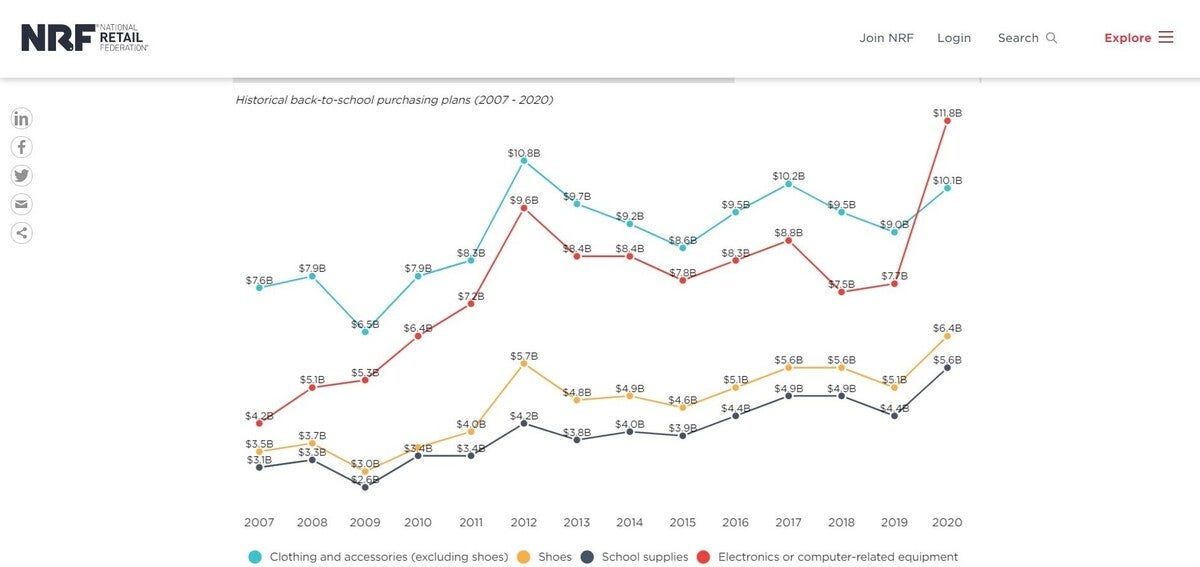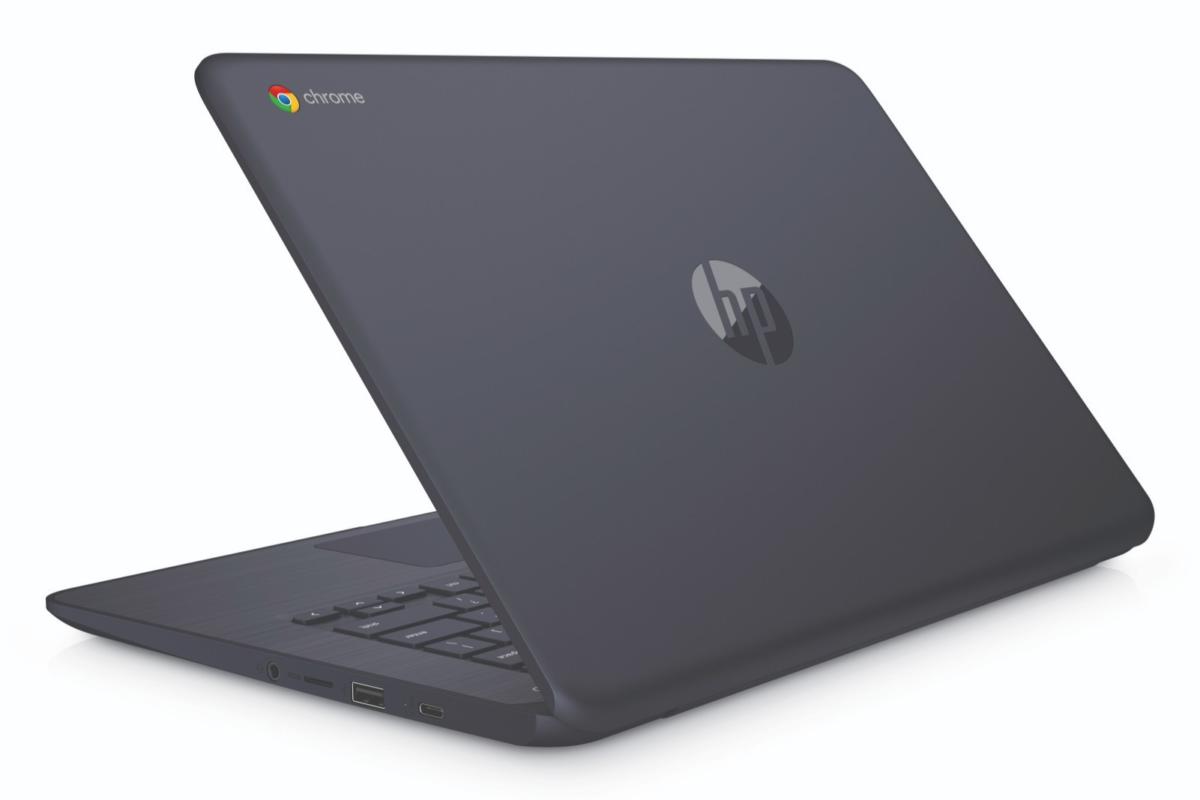AMD has a dream that we’ll all buy more PCs, including AMD-based ones, of course—and that dream just may be coming true. Citing data from the National Retail Federation, Rick Bergman, AMD’s VP of Computing and Graphics, said he believes the sudden shift to working and learning from home during the pandemic will drive a PC onto every desk (and coffee table and kitchen counter) at home.
“Previously, having a PC at home was considered a one-per-family need,” Bergman wrote in a blog. “Now, with requirements around online schooling, working remotely and wanting to have an outlet for downtime while staying home, the trend seems to be shifting to a one-per-person PC demand,” Bergman wrote.
 National Retail Federation
National Retail FederationSurvey data from the National Retail Federation shows a large spike in electronics and computer spending for back-to-school (K-12) this year.
In his blog, Bergman cited survey data from the NRF that showed American families plans to spend a record $11.8 billion this year on electronics or computer equipment just for “back to school,” a category encompassing K-12 students. The same spend for 2019 was $7.7 billion, according to the NRF survey. The NRF survey shows 63 percent of families with K-12 kids plan to buy a computer this year.
The NRF numbers also show 60 percent of college-bound shoppers plan to buy electronics or computer-related equipment. The actual spending in that category by college-age students is projected to increase from $13.1B in 2019 to $16.7B in 2020.
The survey of 7,481 consumers was conducted between July 1 and July 8 by Prosper Insights & Analytics and has a margin of error of 1.1 percent.
Of course, a computer could mean everything from a $50 Amazon Fire tablet to a $5,000 workstation, and buyers’ budgets appear to reflect that. Of the 7,481 people surveyed, the average amount expected to be spent in 2020 on electronics and computer hardware for K-12 was $274.44.
 National Retail Federation
National Retail FederationBack-to-college spending on electronics and computer-related equipment is expected to take a big jump, according to survey data released by the National Retail Federation.
While some will certainly buy higher-end laptops and desktops, that range of spending means an awful lot of entry-level Windows 10 PCs and truckloads of Chromebooks are likely to be in virtual shopping carts. The $274.44 for computers and electronics is also up considerably from 2018, where the average spend was $203.44, and 2018, where it was $187.10. Back-to-college, the average spend is a bit lower at $261.52, but that’s still an increase over the previous year’s intended spend of $243.69.
Bergman’s point is mainly to fly the flag for PCs, some of which presumably have AMD hardware inside of them. Despite his obvious leanings, it’s clear the PC is not going away for work and education needs, not to mention gaming. “While smart phones have seen impressive advances over the past few years, “ Bergman wrote. “The need for PCs to work, learn and play is not going away.”
 HP
HPWith the average consumer expecting to spend about $277 on electronics and computers this year, you can bet a lot of Chromebooks such as this HP Chromebook 14 will be sold.












